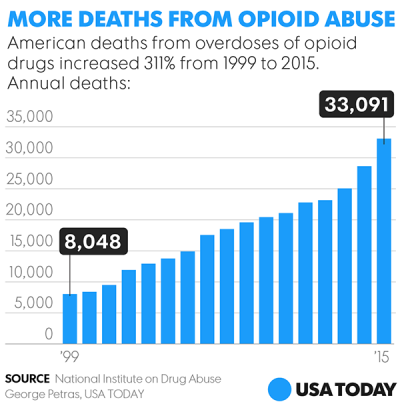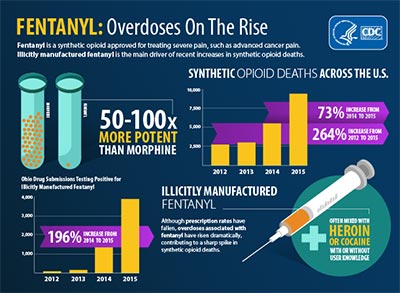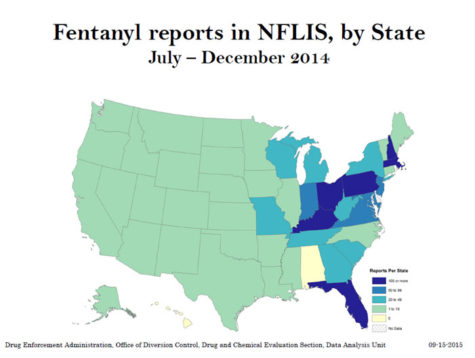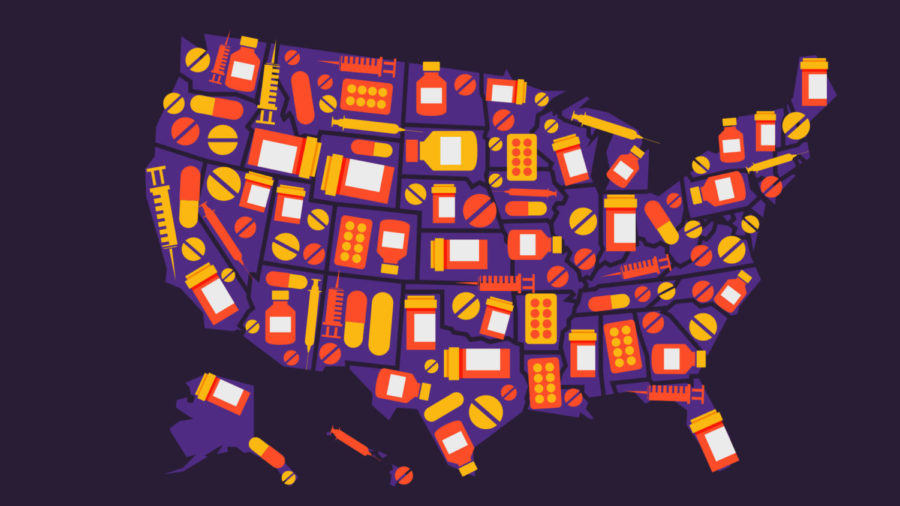The Opioid Epidemic
September 16, 2019
The National Cancer Institute defines an opioid as “A substance used to treat moderate to severe pain. Opioids are like opiates, such as morphine and codeine, but are not made from opium. Opioids bind to opioid receptors in the central nervous system.” These opioids are often prescribed as painkillers by doctors for patients after completing a surgery or as a way to cope with chronic conditions. These opioids include Oxycodone, Hydrocodone, Codeine, Morphine, and many others.
While opioids are often needed to help ease the pain of people after some procedures, it is often over prescribed with little help from the doctor in helping yourself get off the drug after usage. Opioids can often be an intrinsic part of treatment in helping cope with the pain of certain operations or illnesses. However, doctors will often prescribe a patient far too many pills, leading them to have an excess and increasing the risk of addiction, as Pacific Ridge reports. Another problem that can lead to addiction is the lack of a plan to wean patients off these pills. After an extended dose of these painkillers, your body has already become dependent on them. Without Alcohol and Drug Intervention Services, it becomes far easier to become severely addicted and begin taking drugs like heroin.

The real issue with these opioids is the ever-increasing hold they take on your body. This addiction is what leads people to drugs such as heroin because they are easier and cheaper to obtain. However, as these drugs come off the street, they are far more strong and dangerous. Street drugs are illegal and unmaintained, so the risk of overdose is far higher.

Eventually the patient’s body can even become immune to the effects of heroin, and the patient will seek out even stronger drugs, such as fentanyl. Fentanyl is up to 50-100 times more potent than morphine and its usage is climbing.

Without a proper reform in the way, doctors still prescribe these painkillers, and deaths due to overdose will only continue to climb. Many reforms have been suggested, such as reducing the amount and strength of the opioids prescribed and finding a way to return the unused opioids to the doctor. Both of these would help reduce the risk of addiction therefore preventing overdoses.

